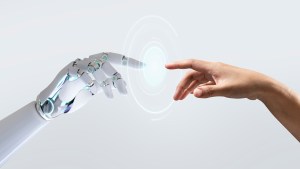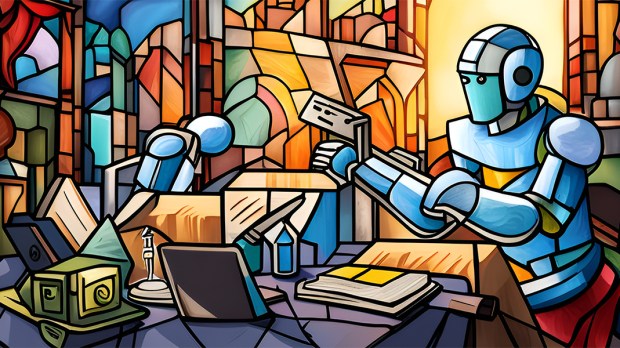The debut of ChatGPT by OpenAI sent shockwaves through the tech world, captivating audiences far and wide. In the Catholic world, we’re all as mystified as everyone else.
For those who are unfamiliar with ChatGPT, it’s an artificial intelligence (AI) technology that possesses the ability to generate remarkably human-like text responses.
At its most basic level, ChatGPT is built using a technology called deep learning. It’s a type of AI that tries to mimic the way our brains work. Just as our brains have millions of interconnected neurons, deep learning models like ChatGPT have millions of artificial neurons, called artificial neural networks.
But it doesn’t “know” anything.
The process of “teaching” it something is referred to as “training.” The training process of ChatGPT involves feeding it with lots of text from various sources. It could be books, articles, websites, or any other text-based information available on the internet. By exposing ChatGPT to such a wide range of texts, it learns patterns, associations, and even grammar rules. This accumulated knowledge is referred to as a dataset.
Groundbreaking
In a groundbreaking move, Fivable, a South Carolina-based tech company, has taken the technology that powers ChatGPT, an API called GPT 3 and trained it using solely the Catechism of the Catholic Church. The outcome? “Catholic.chat,” an interactive platform that allows users to engage with the Catechism in a natural, conversational format.
As the popularity of AI continues to soar, its potential for facilitating evangelization and faith education appears virtually limitless. Could we feel that we are “conversing” with St. Thomas Aquinas by transforming his writings and scholarly works into a dataset? Or with Dr. Peter Kreeft, author of innumerable books and essays on such a wide range of topics?
AI could also be utilized to translate Church documents into an array of languages, enabling broader accessibility, and analyze data from Catholic organizations to gain deeper insights into their needs, trends, and challenges.
Naturally, as with any technological advancement, there are inherent risks associated with utilizing AI within the Church. We need to know what we want to achieve by using it. It is crucial to ensure that all technologies are employed in ways that align with Catholic values and teachings. By doing so, AI can potentially become a formidable instrument for good.
The advent of Catholic.chat could be a significant turning point, creating a space where technology and tradition intertwine, potentially shaping the future of religious education and evangelization.


